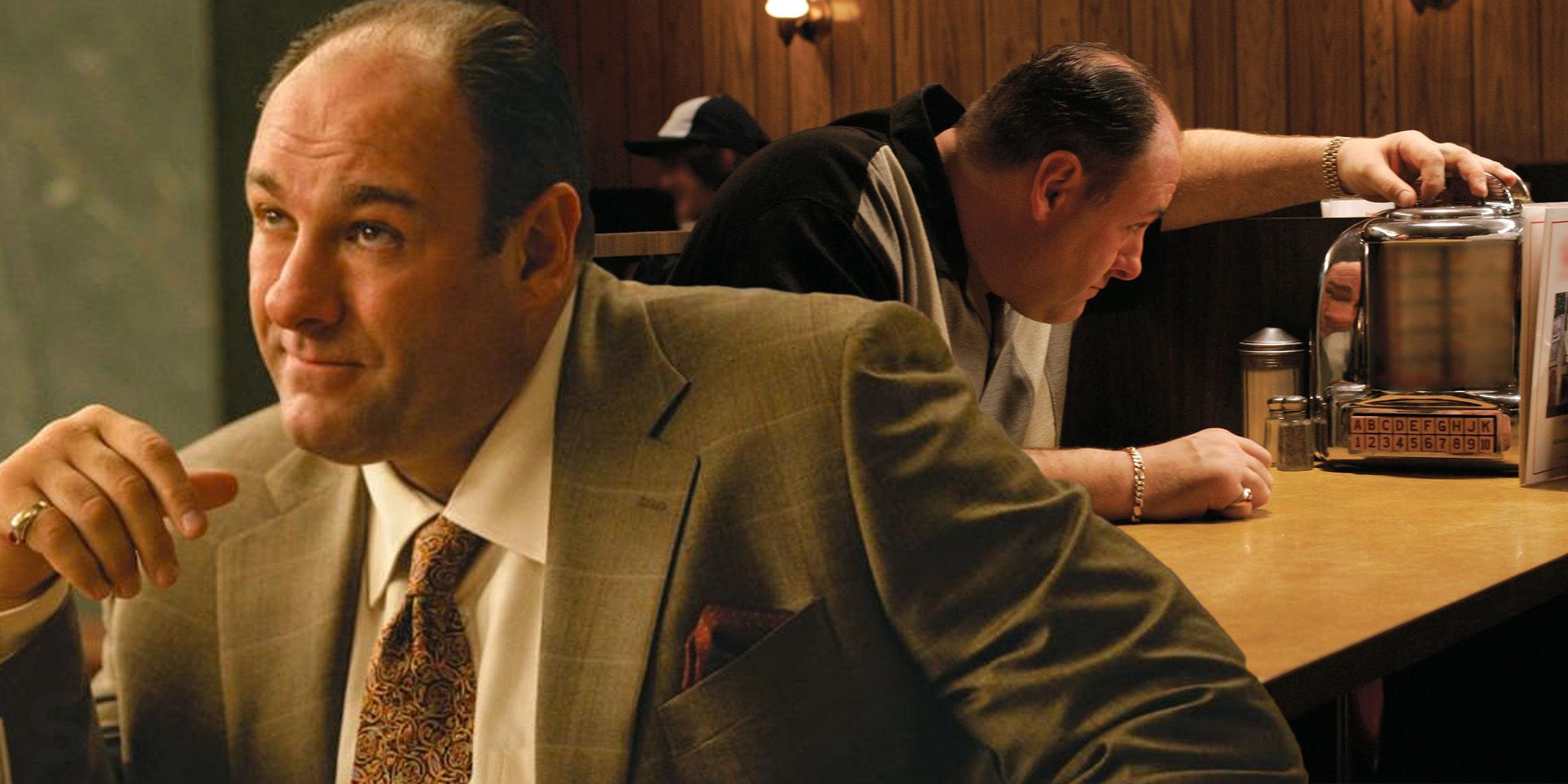
David Chase was inspired by both fictional mobsters and real-life gangsters when creating The Sopranos'protagonist Tony Soprano (James Gandolfini). Based on fictional characters such as Vito Corleone (Marlon Brando), The Sopranos It changed US television forever and also added new layers to the gangster genre – tackling subjects like men's mental health and how the mob viewed homosexuality. The Sopranos it was also heavily influenced by the real-world crime families associated with the Mafia in contemporary America. For example, an opening scene in The Sopranos the first season sees Tony questioned about real-life mobster John Gotti.
It's the fact that the influence of these real-world gangsters seeps into the show that viewers convinced there is a "real" Tony Soprano. While it's most likely that David Chase brought together several fictional and real gangsters to create Tony Soprano, there are several candidates for the real-life inspiration behind James Gandolfini's film. Sopranos character. The real-life gangster most widely accepted as the "real" Tony Soprano is Vincent "Vinny Ocean" Palermo, with whom Tony shares many similarities, but whose stories diverge considerably toward the end.
Tony Soprano is supposedly based on Vincent Palermo
The real Tony Soprano was a New Jersey mob boss
The 2006 documentary The real sopranos drew comparisons between Tony Soprano and Vincent Palermo by joining the dots between the fictional world of David Chase's TV show and the reality of contemporary New Jersey: Palermo was the de facto boss of the DeCavalcante crime family, Tony was in charge of The Sopranos' DiMea crime family. Like Tony Soprano, The Palermo crime family ran a strip club, which was considered the inspiration for The Sopranos' Badda-Bing. The documentary also included FBI recordings of discussions within the DeCavalcante family, in which they discussed The Sopranos:
"Should it be us? Every program you watch, more and more, you choose someone... There's a pork store. Yes, in Jersey, right? They have a topless bar there. Jesus."
Palermo's rise to power also strangely mirrored Tony's own rise, as seen in The Sopranos season 1. A joke about Uncle Junior's (Dominic Chianese) oral sex skills got wildly out of control, leading to a Godfatherstyle blow against Tony Soprano. Tony and Junior's fight ended in Tony's favor, and Junior was allowed to live, albeit under reduced circumstances.
Tony's mercy towards Junior was in stark contrast to how Palermo rose to the top of the DeCavalcante family. A similar sex scandal involving bisexual mobster John "Johnny Boy" D'Amato and his visits to swingers clubs led to a violent hit that left D'Amato dead and Palermo the head of the family.
How Vincent Palermo and Tony Soprano's Stories Ended Differently
The real Tony Soprano was an FBI informant
Both Vincent Palermo and Tony Soprano had to face FBI informants between them, but their responses to these betrayals varied. When Ralph Guarino, one of Palermo's associates, became an FBI informant, he was able to gather enough evidence to secure Vinny's arrest. Upon arrest, Palermo became a State witness, admitting to several murders, planning the death of John D'Amato, among others, and implicating members of the DeCavalcante family in multiple crimes. Palermo's testimony was so explosive that he and his family were forced into the witness protection program.
Unlike the real Tony Soprano, James Gandolfini's character never became a state witness, nor did he allow himself to be recorded by the various informants sent to gather evidence about him. However, Tony Soprano's fate was potentially worse than Palermo's. After Phil Leotardo ordered the death of Vito Spatafore for being gay - another parallel to D'Amato's story - a violent conflict erupted between the DiMeo and Lupertazzi crime families.
At the end of The Sopranosit seemed like the conflict was over, but the tense atmosphere and abrupt fade to black in the final scene suggested that Tony's story had a more brutal ending than Vincent Palermo's. Tony Soprano may be based on a real gangster (at least in part), but his fictional life is much more dramatic than the real story David Chase based him on.
Were any other Sopranos characters based on real gangsters?
Only Tony has such clear connections to the real-life crowd
Tony Soprano was directly inspired by real-life mobster Vincent Palermo. However, every aspect of The Sopranos was also inspired by the real-life Italian mafia in New Jersey, albeit in a less direct way. Most notably, the activities of the DeCavalcante crime family were a major inspiration for the show, as were the Boyars and several others. David Chase and the rest of the creative team behind The Sopranos researched many real-life crime families and mob activities when creating the series' stories and characters, and this is clearly evident when comparing the acclaimed series with real events and figures.
For, for example, Tony Soprano was not only inspired by Vincent Palermo, but also by the former head of the DeCavalcante family, Simone DeCavalcante. Like Tony Soprano, Simone DeCavalcante (aka The Count) was paranoid, despised the hierarchy of the Five Families, and had a series of affairs. Simon DeCavalcante inspired others The Sopranos characters too, as his 1969 arrest helped inform the incarceration of Ercole DiMeo. Ercole "Boot" DiMeo is mentioned several times in The Sopranos, and although he is not a central figure in Tony's story, he is - like Simon DeCavalcante - an important historical figure from the early years of the mob.
However, while Tony Soprano can draw direct comparisons to several real-life mobsters, other characters from The Sopranos are less directly inspired by historical figures. The Sopranos uses true stories of several real-life gangsters to create an entirely fictional narrative, borrowing elements from dozens of real-life events and people to create a unique fictional tapestry. There are parallels to be found for almost every character in The Sopranos to true stories of crime families like the DeCavalcantes and the Boyars, but only with Tony Soprano himself are the comparisons so clear.

